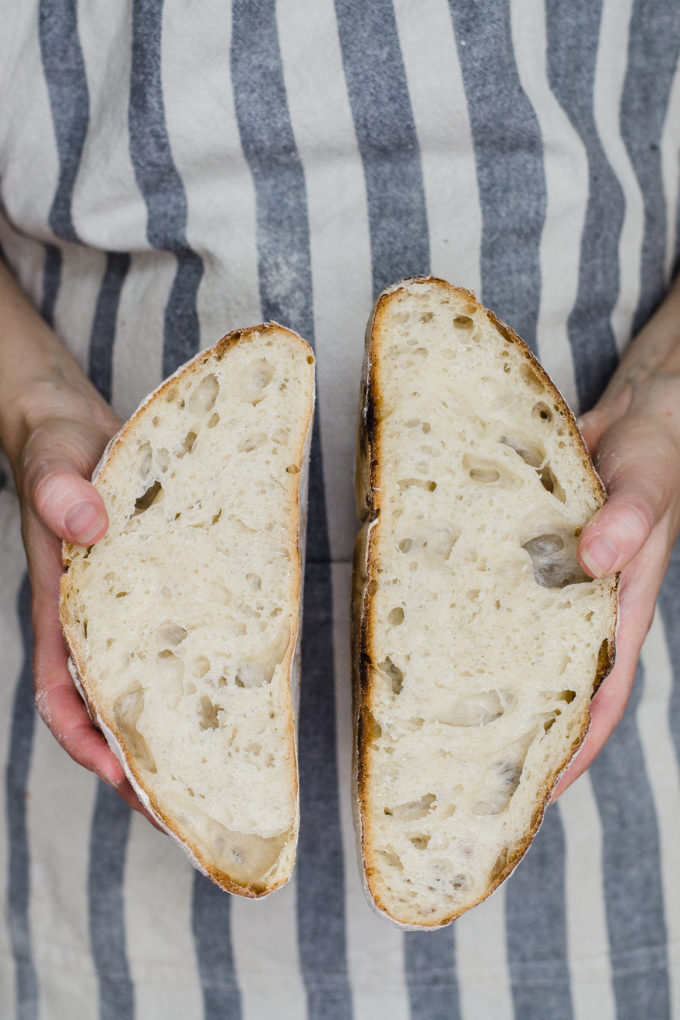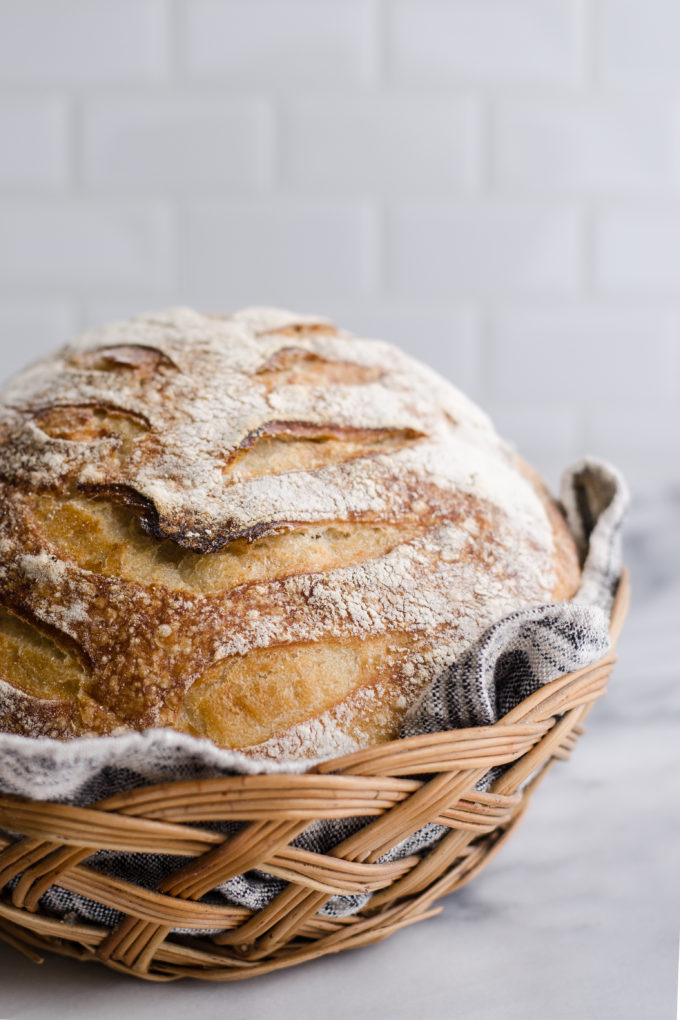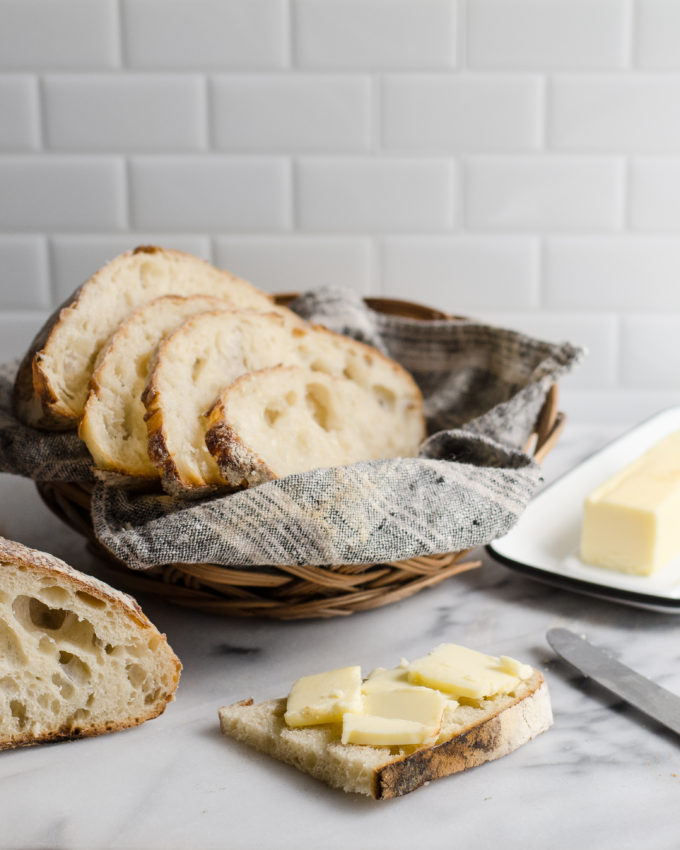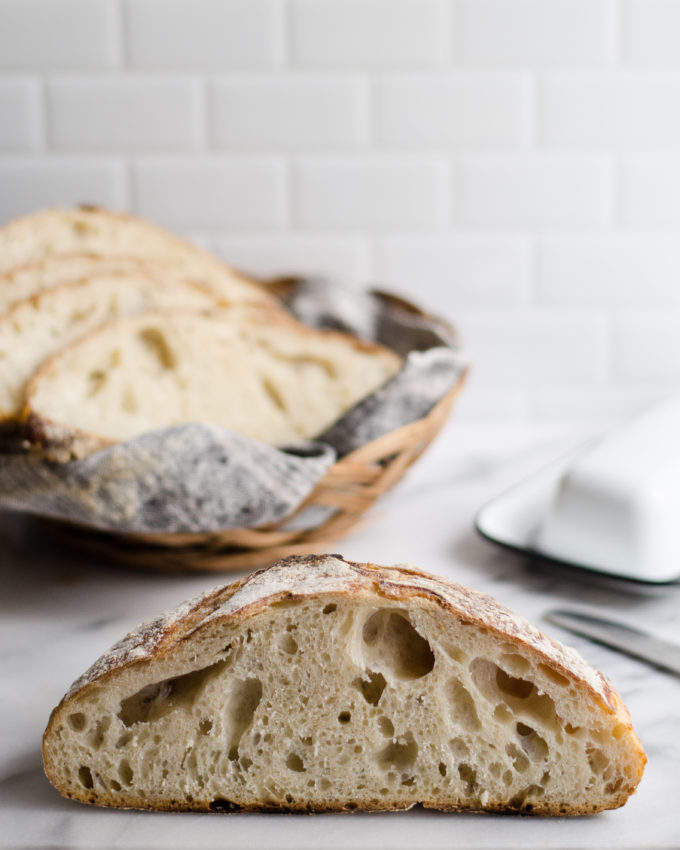Learning how to make artisan sourdough bread at home is a skill you’ll greatly appreciate!

Back when I first started my sourdough journey, one of the first things I baked was a loaf of artisan bread. I found a good recipe and followed it as closely as I could with the equipment I already had. Crossing my fingers, I slid the loaf into my oven. To my surprise and joy, when I pulled it back out, I saw a beautiful loaf!
And even more important than looks was the flavor: it was incredible! My previous experience with sourdough had mouth-puckering sourness. None of that here: my loaf had a great depth of flavor, but other than that it was hard to distinguish the sourness!

Encouraged by my first successful bake, I continued to experiment and perfect the method. Along the way I learned a few tips and tricks for making great artisan sourdough bread at home. For example: a cold, long rise is best. I can’t control the thermostat in my house, so it’s impossible to bake bread in a consistent environment. But letting the dough bulk rise in the refrigerator is a great way to create that environment! Plus the long ferment allows for incredible flavor development.

If you make any of the sourdough recipes on my blog, I beg you: MAKE THIS ONE! It truly is something special. Eating a slice of freshly baked sourdough bread slathered in butter is an experience that all food lovers should have at least once in their life. Yes, you can purchase some really good store-bought sourdough these days. But unless you’re lucky enough to live close to a traditional bakery, it won’t be as fresh as homemade!

You can find my recipe, tips, and tutorial for How to Make Artisan Sourdough Bread at Home over on The Pioneer Woman’s blog HERE.
If you have any questions or need to troubleshoot, I’d love to help! Just leave me a comment below and I’ll do my best to answer.
xoxo
Erica
More Sourdough Recipes:
- How to Make a Sourdough Starter From Scratch
- Sourdough Pie Crust
- Sourdough Dutch Baby/German Pancake
- Overnight Sourdough Waffles

Hannah Schaffer
Saturday 6th of January 2024
Firstly, I love this recipe and every loaf has turned out well for me. …but… that’s only because I read all the comments on the Pioneer woman’s website. The measurements are all messed up and produce bread soup. Your directions list the proper measurements but the recipe measurements really need to be edited or the whole recipe- dare I say it- deleted. I forgot about the error and forwarded the recipe to friends. Alas, they all wasted a lot of time and flour. Or added flour till it seemed right and ended up with 5 loaves. Hope it can be fixed! Thanks.
Sourdough Hamburger Buns Recipe - Buttered Side Up
Wednesday 29th of July 2020
[…] How to Make Artisan Sourdough Bread […]
Judy
Wednesday 24th of June 2020
Done!
Judy
Monday 22nd of June 2020
Hi Erica, I am about halfway through the artisanal sourdough bread recipe, and would like to ask a question. The recipe calls for 1 lb. flour, and your step-by-step phots and written instructions on Pioneer Woman’s website say to add 700 grams of flour. I initially stirred in the 1 lb. of flour to the starter/water mixture and what resulted was way too runny. I went back and looked at the recipe and then did a Google conversion of “700 grams of flour equals how many pounds?”. 700 grams of flour is more like 1 1/2 lbs. of flour, so I just added the additional 1/2 lb. of flour in and the dough looks like it does in your photos. I am at the “stretch and fold” stage now, and things are going along fine. I’ll let you know how this first attempt turns out, and if you have time please let me know about the 1 lb. of flour vs. 1 1/2 lbs. of flour. I know others have made this recipe by reading the comments. Thanks so much Erica!
Erica Kastner
Monday 22nd of June 2020
Hey Judy,
I wrote the recipe using grams, and I think someone else converted it to pounds to better fit the recipe format. Using a quick Google converter, it looks like 700 grams is a little over 1 1/2 pounds!
Pamela McSharry
Saturday 20th of June 2020
How do I store my bread once it's baked?
Erica Kastner
Monday 22nd of June 2020
I recommend either storing it at room temperature in a plastic zippered bag or wrapped in beeswax wrap, or freeze it.